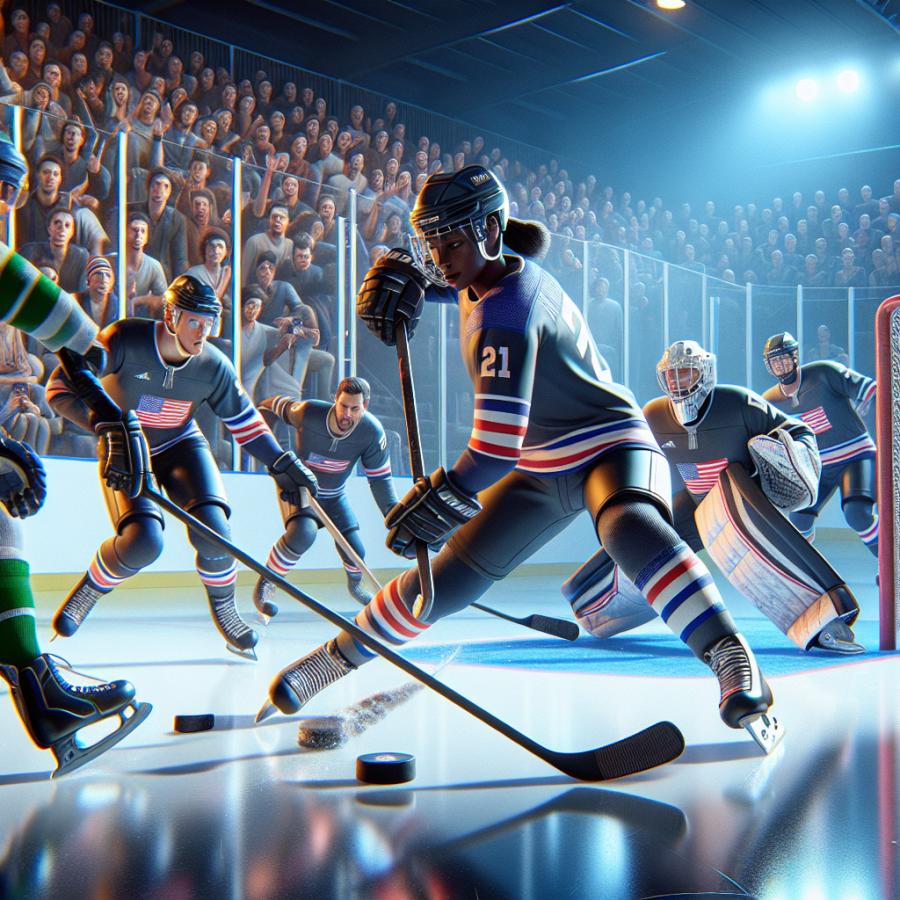Diving into the Dynamic Gameplay: Understanding Ice Hockey Rules and Strategies
Ice hockey, nicknamed 'the fastest game on earth', is a captivating mixture of speed, skills, and strategy. To fully appreciate the game, it's necessary to understand both the rules governing gameplay and the tactics used by teams to outwit their opponents.
In terms of rules, ice hockey is governed by a relatively complex set of regulations designed to ensure fair play. The play begins with a face-off at the center ice, and the game is divided into three 20-minute periods with a 15-minute rest between each. Seven players make the on-ice team, including one goalkeeper and six players who perform the roles of left and right defenders, left and right wingers, and a center. The objective is to score the maximum number of goals by skidding the puck into the opposing team's net.
Fouls or penalties are severe in ice hockey, and they occur when a player breaks the defined rules like icing, offsides, roughing, high-sticking, holding, tripping, and so forth. Penalties can result in a player being sent off the ice to the penalty box, leaving their team short-handed.
Power plays and penalty kills are crucial strategies in ice hockey. A power play occurs when one team has more players on the ice due to an opponent's penalty — this numerical advantage provides a prime opportunity to score. On the flip side, the offending team tries to kill the penalty by defending aggressively until their penalized player can return.
The strategy of line changes is a crucial factor keeping the game dynamic. The intense action of an ice hockey game means that players often need frequent short rests. Coaches will often change the entire line of players, or "line-up", to keep players fresh and keep their opponents guessing. Understanding the chemistry between different line-ups and coordinating their substitutions is crucial to optimize a team's performance.
Teams also deploy a variety of playing systems or strategic formations to outwit their opponents. One common strategy is the ‘2-1-2 Spread,’ which refers to two forwards applying pressure on the puck, one forward supporting them, and two defenders staying at a safe distance to react to the changing dynamics of the game. Similarly, the ‘1-3-1 Power Play’ system takes advantage of numerical superiority. One player applies pressure, three players form a horizontal line to receive the puck, and one defenseman stays farthest to provide safety in case the rival team retrieves the puck.
Read also:
Kickoff Dates: When Does the 2024 Soccer Season Start?"
A Trip Down Memory Lane: Exploring the Fascinating History of Ice Hockey
Ice hockey's exciting game action, fast-paced strategies, and rich history make it incredibly compelling. Its fascinating past stretches back centuries, riveting everyone from casual fans to fanatics with a thrilling legacy of awe-inspiring plays, legendary rivalries, and remarkable players. Today, we delve deep into the origins of ice hockey and its development throughout the years.
The initial forms of the sport go back hundreds of years. Indigenous cultures around the world played games that involved some form of stick and ball. However, the sport that we now recognize as ice hockey originated in the mid-19th century in Canada. The first recorded indoor ice hockey game, held at Montreal's Victoria Skating Rink on March 3, 1875, consisted of two nine-player teams equipped with wooden sticks and a wooden puck.
In 1880, ice hockey began to take on a modern structure when the McGill University Hockey Club in Montreal crafted the first set of established rules. These rules dictated that games must be played with six-player teams, and introduced the concept of offsides. It was this commitment to formalizing the game that laid the foundation for the future of ice hockey.
As the sport continued to grow in popularity, it began to spread beyond Canadian borders. In the early 20th century, professional hockey leagues began to emerge, leading to the creation of the National Hockey League (NHL) in 1917. Today, the NHL is the premier professional ice hockey league in the world, showcasing the skills of players from more than 20 countries.
Throughout its history, ice hockey has spawned many legendary teams and players who have shaped the sport into what it is today. Teams like the Montreal Canadiens, who hold a record of 24 Stanley Cup victories, and players like Wayne Gretzky and Gordie Howe, have left indelible marks on the sport and continue to inspire future generations of players.
Ice hockey's strategies have also evolved over time, with advancements in technology and changes in rules contributing to the progression of on-ice strategies. In the early days of the sport, an offside rule prevented forward passing, which led to a style of play focused on individual stick-handling skills. The introduction of the forward pass in the late 1920's brought about a more collaborative style of play, and modern strategies now focus on positioning, speed, and teamwork.
The history of ice hockey is also deeply intertwined with international politics, with the sport often serving as a symbol of national pride.




